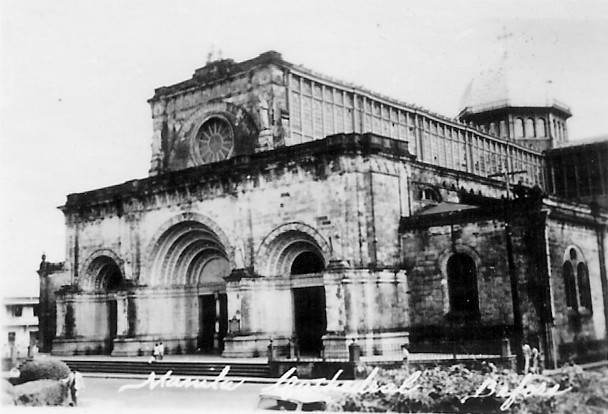Pulong ng Editor
‘This cathedral has been razed to the ground many times, but it refuses to disappear. It boldly rises from the ruins - just like the Filipino people.’
On 16 January Luis Antonio Cardinal Tagle, Archbishop of Manila, gave a welcoming speech to Pope Francis before the final blessing at the Mass in the Cathedral-Basilica of the Immaculate Conception in which bishops, priests, seminarians and religious participated. He spoke of the Cathedral as a symbol of the people, the church building as a symbol of the Church, the faithful. May his words lead us into a profound sense of gratitude for the gift of the faith that God has given each of us as individuals and all of us as his Church, especially here in the Philippines. Here is the text of the Cardinal’s talk.
Manila Cathedral today
Most Holy Father,
Before you are representatives of the bishops, priests, religious men and women and lay faithful of the Philippines and of Asia. In their name I welcome you to our country, to the city of Manila and to the Cathedral Basilica of the Immaculate Conception. Welcome. Benvenuto. We are filled with joy for you are with us, especially in the first Eucharistic celebration of your pastoral visit.

Manila Cathedral before the 1880 earthquake
The Manila Cathedral is the first cathedral church in the Philippines. It can be considered a symbol of the Filipino people. Fire destroyed the first cathedral. The succeeding five cathedrals were either partially or totally damaged by earthquakes, the most massive of which struck in 1863 burying in rubble the members of the cathedral chapter, the choir and the lay faithful.

Manila Cathedral after the 1880 earthquake
The seventh cathedral was mercilessly bombed along with the other buildings in the Walled City of Manila (Intramuros) during the battle of liberation in 1945. We are gathered today, Your Holiness, in the eighth cathedral building. And we closed three years ago for repairs. Now it is open and it warmly welcomes you. This cathedral has been razed to the ground many times, but it refuses to disappear. It boldly rises from the ruins - just like the Filipino people. Yes, Holy Father, we bishops, priests and religious men and women have seen and have lived the suffering, but also the determination of our people. ‘We are afflicted in every way possible, but we are not crushed’ (2 Corinthians 4:8).

Manila Cathedral before the Allied bombing of February 1945
What is the secret of the resilience of the Filipinos? Fr. Horacio de la Costa, your confrere, a Jesuit, historian, writer, priest, religious and nationalist, provides an insight. He said that the Filipino has two treasures: We have two ‘wealths’: music and faith. La musica y la fede. Our melodies make our spirits soar above the tragedies of life. Our faith makes us stand up again and again after deadly fires, earthquakes, typhoons and wars. And now, as many of our poor people are just beginning to rise from recent natural and human-made calamities, as we are struggling, you, Holy Father came to us.

Manila Cathedral after the bombing of February 1945
You bring fire, not to destroy but to purify. You bring an earthquake, not to shatter but to awaken. You bring weapons, not to kill but to assure, to encourage. Indeed, ‘you are Peter, the Rock upon which Jesus builds His Church’ (Matthew 16:18). You are Peter who comes ‘to strengthen your brothers and sisters in faith’ (Luke 22:32). We welcome you, successor of Peter, to this blessed land of untiring hope, of infinite music and of joyful faith. With your visit, we know Jesus, only Jesus, will renew and rebuild His Church in the Philippines. Mabuhay po kayo, Santo Padre!

The Cathedral today
All photos from Wikipedia.
